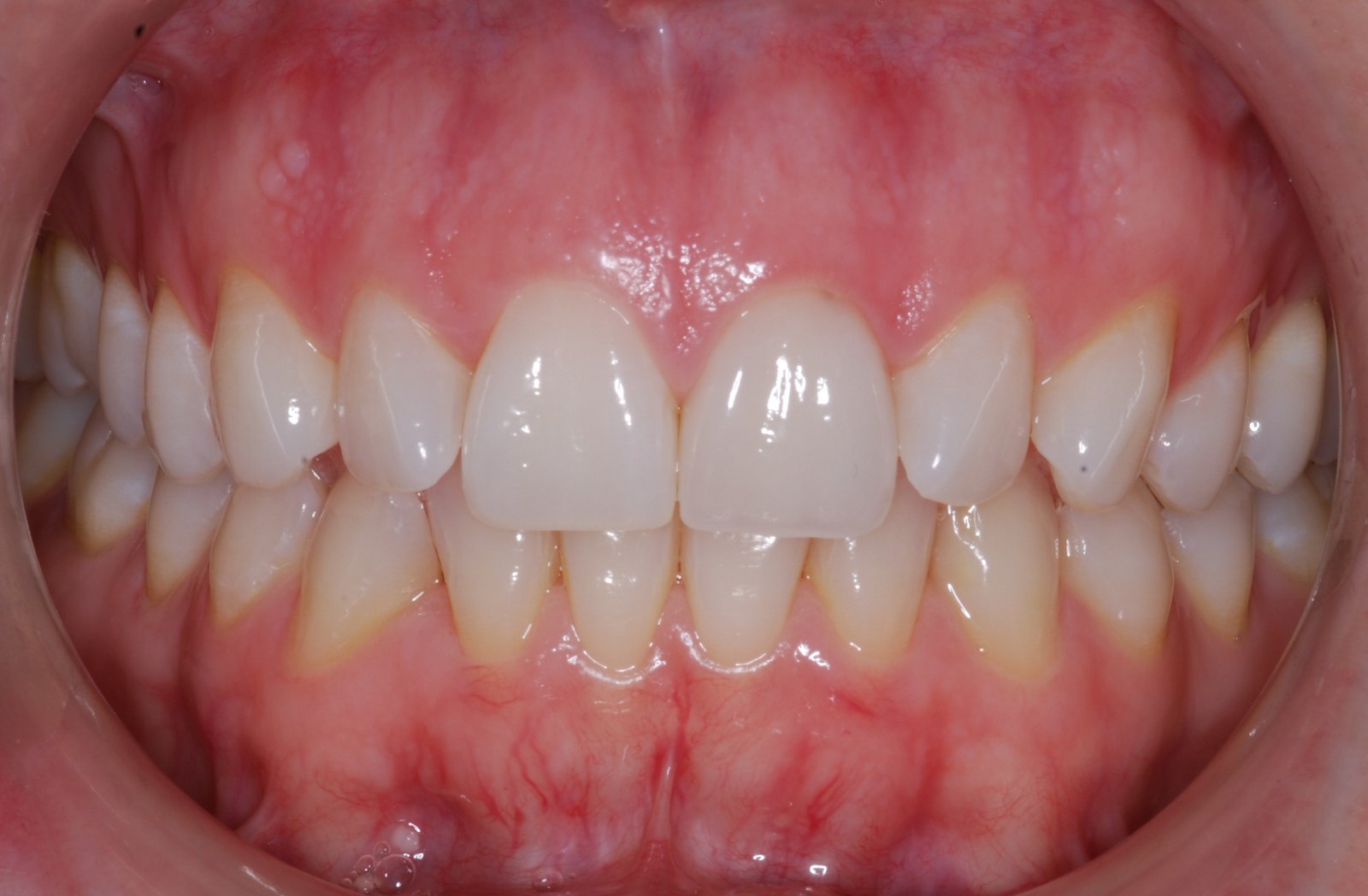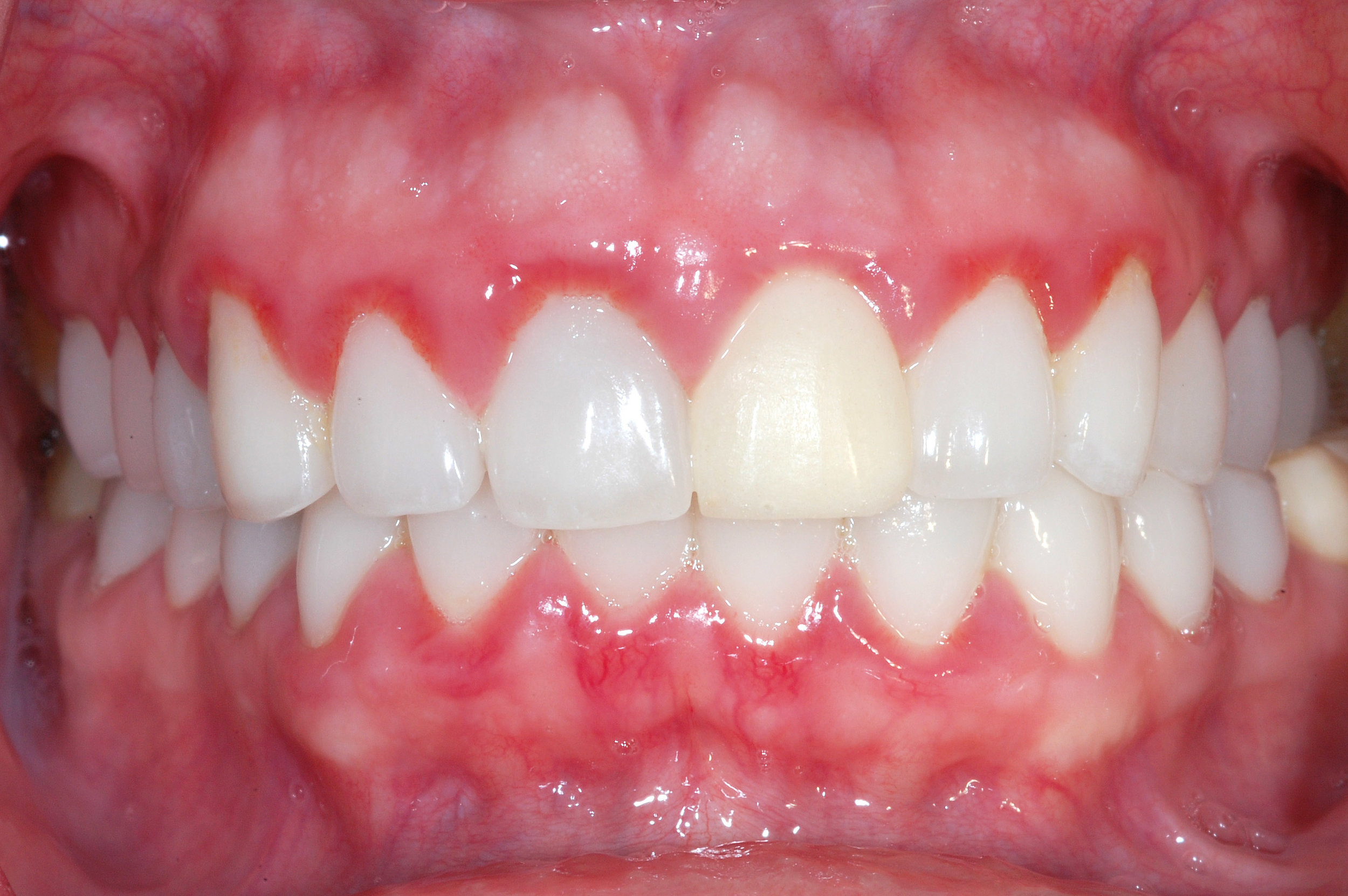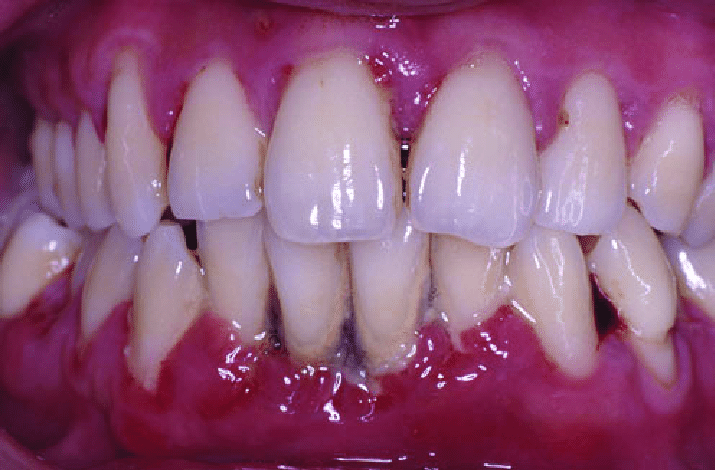Gum Disease




Even though February is Gum disease awareness month, it is still good to learn about gum disease at anytime. Gum disease is the inflammation of the soft tissue (gingiva) and an abnormal loss of bone that surrounds the teeth and holds them in place. Gingivitis is the first stage and the more mild form of periodontal disease. There is, however, an aggressive form of gingivitis called ANUG. This stands for Acute Necrotizing Ulcerative Gingivitis. This is a very painful condition where the gum tissue is sloughing away. Traditional gingivitis is characterized by having red, swollen, and tender gums that bleed easily. If gingivitis is not treated, Periodontitis or gum disease will follow.
While we used to think of Periodontitis as having different types, which it does, today it is more important to assess the stage of gum disease. There are many types of Periodontitis. Some common types are localized juvenile periodontitis (LJP), adult periodontitis, recurrent periodontitis, periodontitis associated with systemic disease, and necrotizing periodontitis.
Gum disease can have multiple factors as to why a person may develop it; the biggest factor is plaque. Plaque left behind causes inflammation and begins to accumulate. Plaque can then get hard turning into what is called tartar or calculus. Calculus which comes from the Greek word Lithos, meaning stone. While plaque is a significant factor in causing periodontal disease, poor hygiene habits are the second significant factor in developing this disease process. We recommend brushing your teeth at eat twice a day and also using the WaterPik once or twice a day as well. Flossing can also be of great benefit but our interaction with patients has lead us to believe that the WaterPik is more readily accepted and more frequently use than floss.
